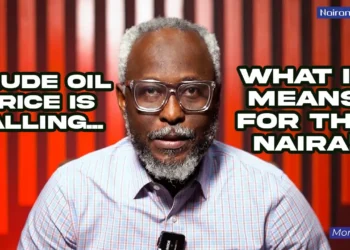Brent crude is back to $80 per barrel after dropping to $72 per barrel on Friday, November 17. As of Sunday, November 19, Brent crude was $80.61 per barrel as of 4:21 PM, GMT+1.
The crude oil price benchmark fell below $80 per barrel due to an increase in U.S. crude inventories and the continuation of a consistently high level of production.
Reuters reported that analysts at Goldman Sachs mentioned that despite demand surpassing their optimistic predictions, oil prices have decreased slightly this year.
They attributed this trend to non-core OPEC countries producing more oil than anticipated, although this was partly offset by OPEC’s cuts.
According to Oil Price, experts Warren Patterson and Ewa Manthey from ING pointed out on November 17 that the current drop in oil prices makes it more likely that Saudi Arabia will extend their extra voluntary reduction of 1 million barrels per day into the beginning of next year.
This move is expected to help eliminate the anticipated surplus and offer some support to the market.
More insights on the OPEC context
In recent discussions, Christyan Malek, who heads JPMorgan’s energy strategy, expressed concerns about the sharp decline in oil prices.
He highlighted that the current drop is not just due to the actions of commodity trading advisers who are shorting oil, but also because the market is underestimating the possibility of more significant supply cuts at the upcoming November 26 OPEC+ meeting.
Malek shared his perspective with Bloomberg, stating that the oil market seems to be assuming very low probabilities for deeper supply cuts.
He believes the likelihood is higher than what is currently being perceived, not as a base expectation but as a plausible scenario.
He mentioned that deeper cuts might become necessary to proactively address potential weaknesses expected in the oil market during the first half of the following year.
Reflecting on the current situation, Malek emphasized the need for potential cuts, especially considering the existing demand trends and the overall balance in oil markets.
Contrary to the belief that Saudi Arabia might not have much room for further cuts, Malek disagreed, suggesting that there is more flexibility if they choose to reduce output.
He speculated the possibility of substantial cuts from Saudi Arabia but indicated it’s more probable for them to advocate collective reductions among OPEC countries rather than implementing cuts on their own.
MOMR context
The November 2023 monthly oil market report (MOMR) from the Organization of Petroleum Exporting Countries (OPEC) noted an adjustment to their prediction for the growth in global oil demand for the year 2023, now estimating it to be around 2.5 million barrels per day.
This upward revision suggests a slightly increased expectation compared to their earlier forecast.
However, despite a solid foundation in the oil market, the report also sheds light on a recent drop in oil prices.
According to OPEC, this decline is primarily linked to significant decreases in the amount of oil that financial market speculators are expecting to hold onto for the long term.
These reductions in what’s known as ‘net long positions’ by these speculators happened notably during October and have contributed to the downward trend in oil prices.




















